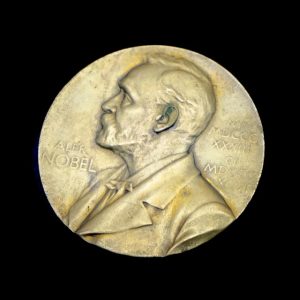あれ~!?ノーベル賞の特許は誰がどの様に管理・運営しているの?国際特許の実情とは?
 イメージ
イメージ
あれ~!?ノーベル賞の特許は誰がどの様に管理・運営しているの?
国際特許の実情とは?
今年のノーベル賞の授賞者の発表が続いています。(2025年10月19日現在)
今年は 日本から2名の授賞者が出て世界的にも注目されていると思います。
また、アメリカのトランプ大統領は自分がノーベル 平和賞に相応しいとしきりに
アピールして物議をかもしましたが~。(笑)
さて、今年の発表の前の9月に ある英字新聞に面白い記事が出て私は少し興奮しました。
それは、約50年ぶりに ノーベルの特許証書がスエーデンで発見されたとの記事でした。
私は、ノーベルの莫大な特許証書等はノーベル賞財団が管理・資産運営していると
思っていたので 驚きました。そこで、国際特許の実情を調べてみました。
すると~、意外な事実が判明しました。
国際的な特許制度はいつ、なぜ生まれたのか?
私たちが日常で使う便利な道具やサービスの裏側には、多くの「発明」が存在します。
そして発明者を守る仕組みが「特許制度」です。
日本国内における特許法はよく知られていますが、
実は「国際的な特許法」が世界共通で存在するわけではないようです。
しかし、国境を越えて発明を保護するための国際的な枠組みは、
19世紀から徐々に整えられてきました。
 イメージ
イメージ
パリ条約の成立(1883年)
国際的な特許制度の第一歩となったのは、1883年に成立した
「工業所有権の保護に関するパリ条約」、通称パリ条約です。
この条約が求められた背景には、産業革命以降の急速な国際経済の発展があります。
当時、ヨーロッパを中心に技術革新が次々と生まれ、各国に輸出されていました。
しかし、発明者や企業が自国で特許を出願すると、
その情報が公開されてしまい、他国で「新規性を失った」として
を取れなくなることが多発していました。
そこでパリ条約では「優先権制度」が導入されました。
これは、自国で特許出願してから12か月以内であれば、
他国でも同じ発明を出願したときに「最初の出願日を基準にして扱う」という仕組みです。
この制度のおかげで、発明者は国際的に特許を守りやすくなり、
グローバルな技術の流通が促進されました。
WIPOの設立(1967年)
20世紀に入ると、国際的な経済交流はますます拡大しました。
特許だけでなく、商標や著作権といった知的財産権を巡る問題も複雑化していきます。
そこで1967年、スイス・ジュネーブに「世界知的所有権機関(WIPO)」が設立されました。
WIPOは、特許や商標、著作権に関する国際条約を統括・運営する国連専門機関です。
これにより、各国ごとにバラバラだった知的財産制度を整理し、
国際的に協調を進める基盤が整いました。
 イメージ
イメージ
特許協力条約(PCT)の登場(1970年)
とはいえ、各国で特許を取得するためには依然として多大な手間と費用がかかりました。
たとえば、10か国で特許を取りたい場合、それぞれの国に翻訳文を提出し、
別々に手続きを行わなければなりません。発明者や企業にとっては大きな負担でした。
この問題を解決するために1970年に採択されたのが
「特許協力条約(PCT)」です。
PCTによって「一度の国際出願で、
複数の国に同時に出願したのと同じ効果」を得られる仕組みができました。
ただし「国際特許」というものは存在せず、
最終的な特許の付与判断は各国の特許庁が行います。
それでも、国際出願という選択肢は研究者や企業にとって大きなメリットとなり、
世界のイノベーションを加速させました。
日本国内では こうした国際出願した特許を「国際特許取得」と表現する事が多いです。
私は以前知人が、複数の国際特許を取得したので、その手続きの複雑さや多額の費用も
少し理解しています。
まとめ
国際的な特許法そのものは存在しません。
しかし、発明者を国際的に守るための枠組みは
1883年のパリ条約から始まり、1967年のWIPO設立、1970年のPCT導入と進化してきました。
その背景には常に「発明を国際的に保護し、技術の発展を妨げないようにする」と
いう共通の目的があります。
現代の私たちが使うスマートフォンやインターネットサービスが
世界規模で展開できるのも、こうした国際的な特許制度が
整えられてきたおかげだといえるでしょう。
続く!
 image
image
Huh!? Who actually manages and operates the Nobel patents?
What is the reality of international patents?
The announcements of this year’s Nobel Prize winners are continuing.
This year, two laureates from Japan have been selected,
drawing worldwide attention.
Meanwhile, U.S. President Donald Trump stirred controversy by repeatedly claiming
that he himself deserves the Nobel Peace Prize. (laughs)
Now, before the official Nobel announcements,
I came across a fascinating article
in an English-language newspaper this September,
which truly excited me.
It reported that a certificate for one of Alfred Nobel’s patents was discovered in Sweden
for the first time in about 50 years.
I had always assumed that Nobel’s vast portfolio of patents and
related documents were fully managed and administered by the Nobel Foundation—
so this discovery surprised me greatly.
That prompted me to look into how international patents actually work.
And what I found was rather unexpected.
When and why did the international patent system emerge?
Behind the convenient tools and services we use every day lies a multitude of inventions.
The system designed to protect those inventors is the patent system.
Most people are familiar with domestic patent laws, such as Japan’s Patent Act,
but in fact, there is no single, unified “international patent law” that applies globally.
However, the framework for protecting inventions across borders
has gradually been developed since the 19th century.
 image
image
The Paris Convention (1883)
The first major step toward an international patent framework was
the Paris Convention
for the Protection of Industrial Property, established in 1883.
Its creation was driven by the rapid international economic growth following
the Industrial Revolution.
At that time, technological innovations were being developed—
mainly in Europe—and exported worldwide.
However, when inventors or companies filed patents in their home countries,
the published information often caused their inventions to lose “novelty”
status abroad,making it impossible to obtain patents elsewhere.
To solve this, the Paris Convention introduced the “right of priority” system.
It allowed inventors, within 12 months of filing a patent in their home country,
to file in other countries while retaining the original filing date as the reference.
This made it much easier to protect inventions internationally and
greatly facilitated global technology exchange.
The Establishment of WIPO (1967)
By the 20th century, international economic activity expanded even further.
Alongside patents, issues surrounding trademarks and
copyrights grew increasingly complex.
In 1967, the World Intellectual Property Organization (WIPO)
was founded in Geneva, Switzerland.
As a specialized agency of the United Nations,
WIPO oversees and administers global treaties concerning intellectual property.
This helped unify fragmented national systems and
build a foundation for global cooperation.
 image
image
The Patent Cooperation Treaty (PCT) — 1970
Despite progress, obtaining patents in multiple countries still
required enormous effort and cost.
For example, to secure patents in ten different countries,
inventors had to submit separate translations and
applications to each national office.
This was a heavy burden for both researchers and companies.
The solution came in 1970 with the Patent Cooperation Treaty (PCT).
The PCT made it possible to file a single international application that
would have the same effect as filing in multiple countries simultaneously.
However,
it’s important to note that there is still no such thing
as an “international patent.”
Final approval and granting of patents remain the responsibility of
each national patent office.
Still, the PCT system offered inventors and corporations a powerful advantage,
significantly accelerating global innovation.
In Japan, people often refer to patents filed under this system as
“international patents,”though technically that term is not official.
I once had an acquaintance who obtained several international patents,
so I have some understanding of how complicated—and costly—
the process can be.
Summary
There is no single, unified international patent law.
However, a global framework to protect inventors has evolved steadily—
from the Paris Convention (1883),
to the establishment of WIPO (1967),
and the implementation of the PCT (1970).
At the heart of these efforts lies a shared purpose:
to protect invention across borders and ensure that
technological progress is not hindered.
Thanks to these international systems,
the smartphones and online services we use today can operate and
develop on a truly global scale.
To be continued…

